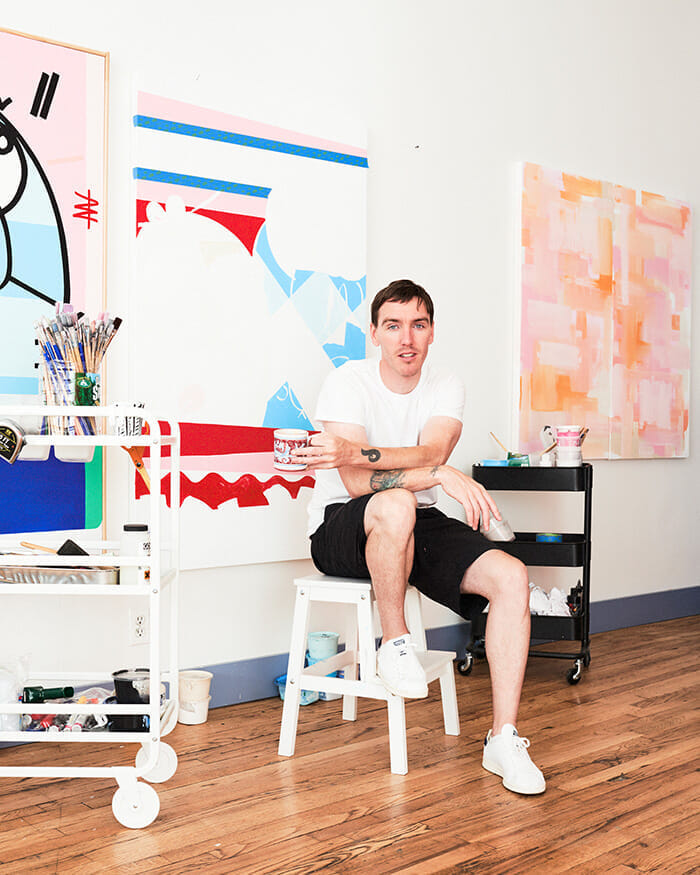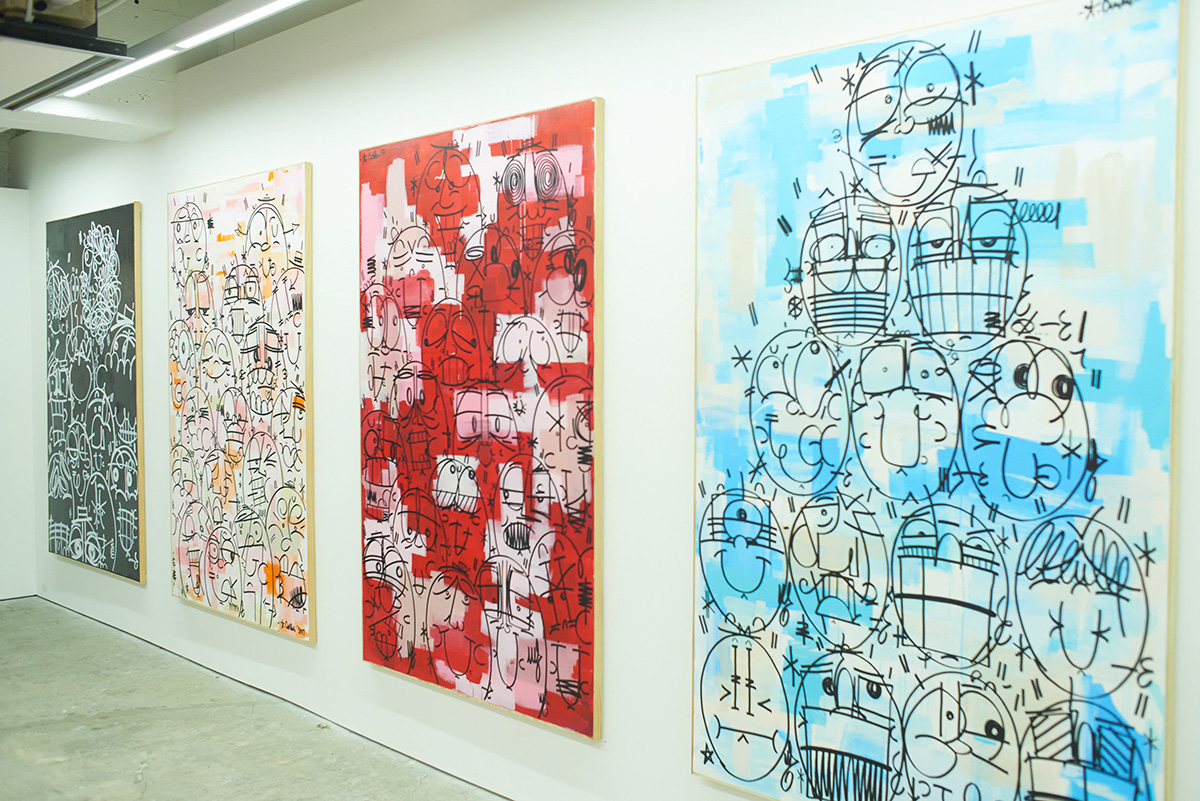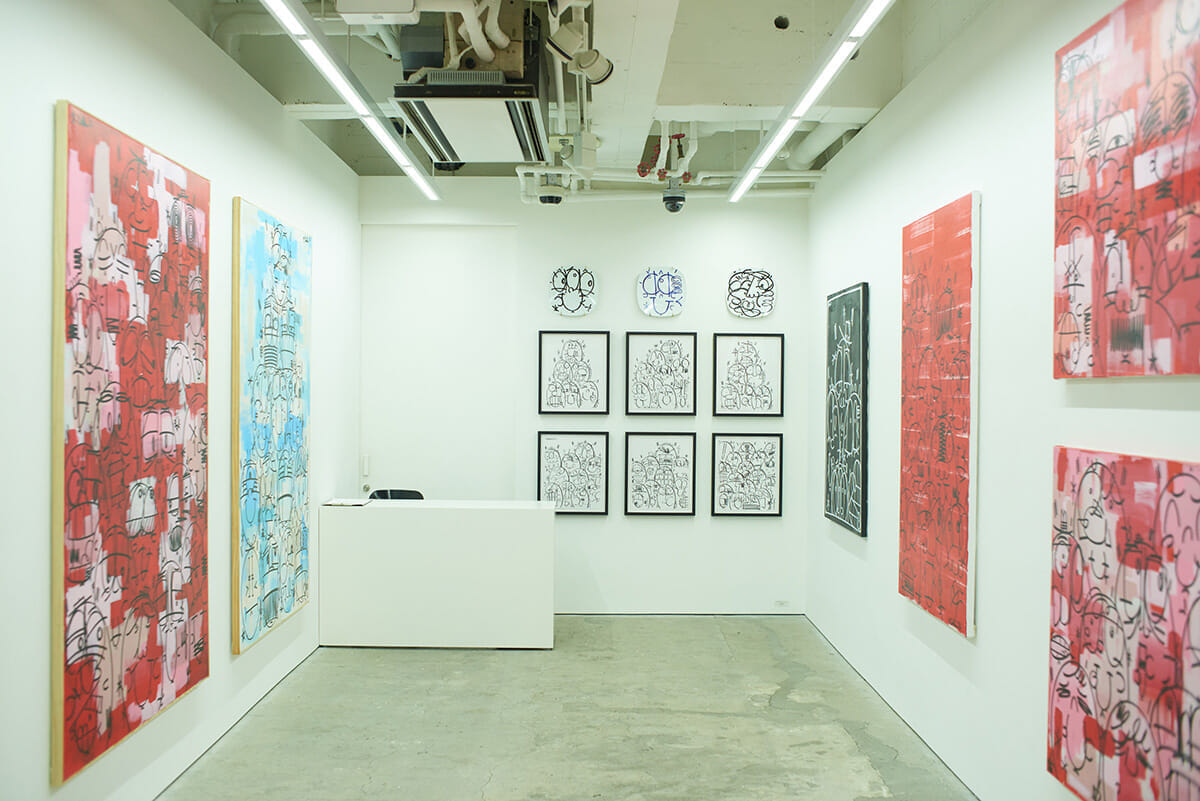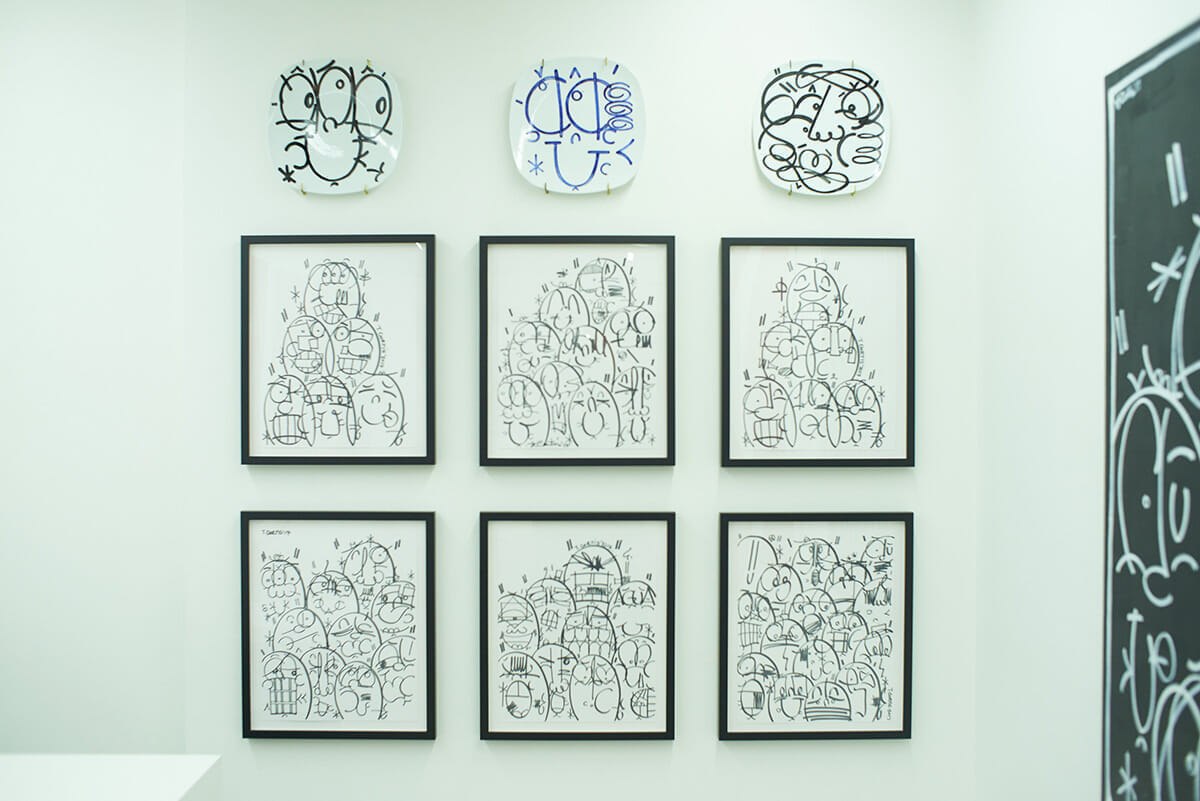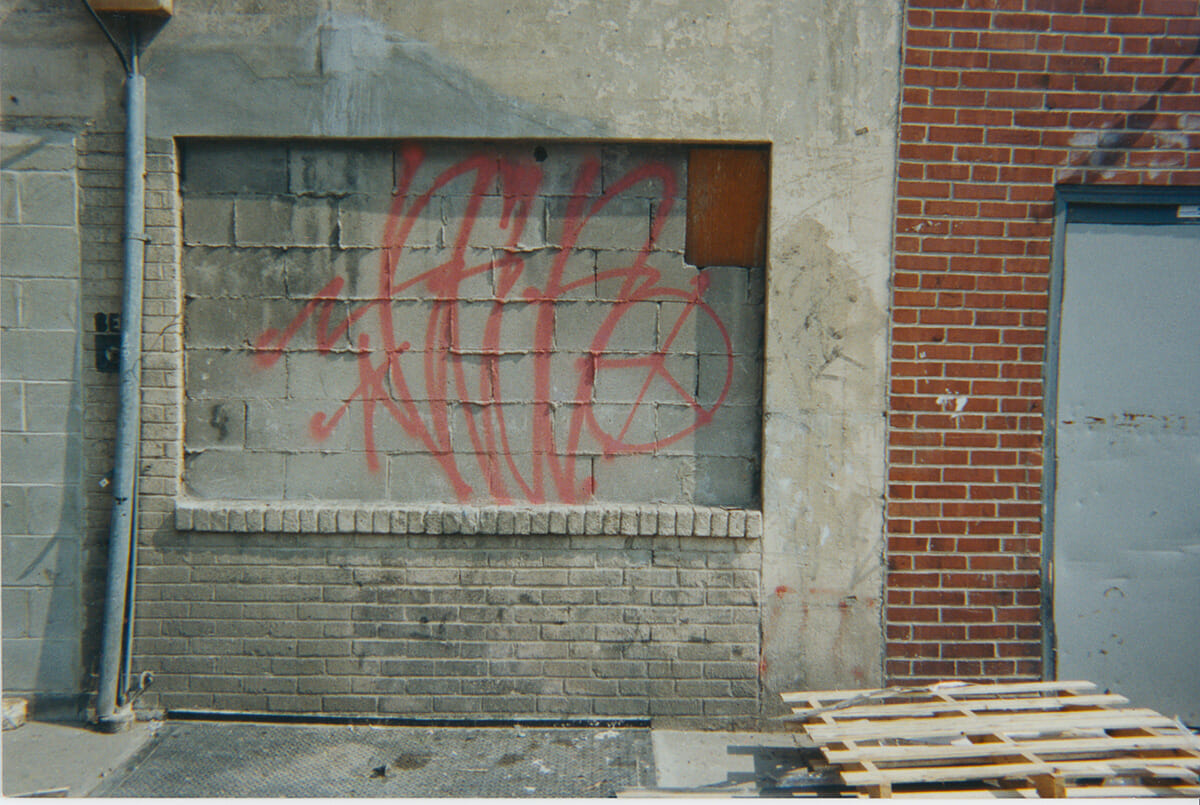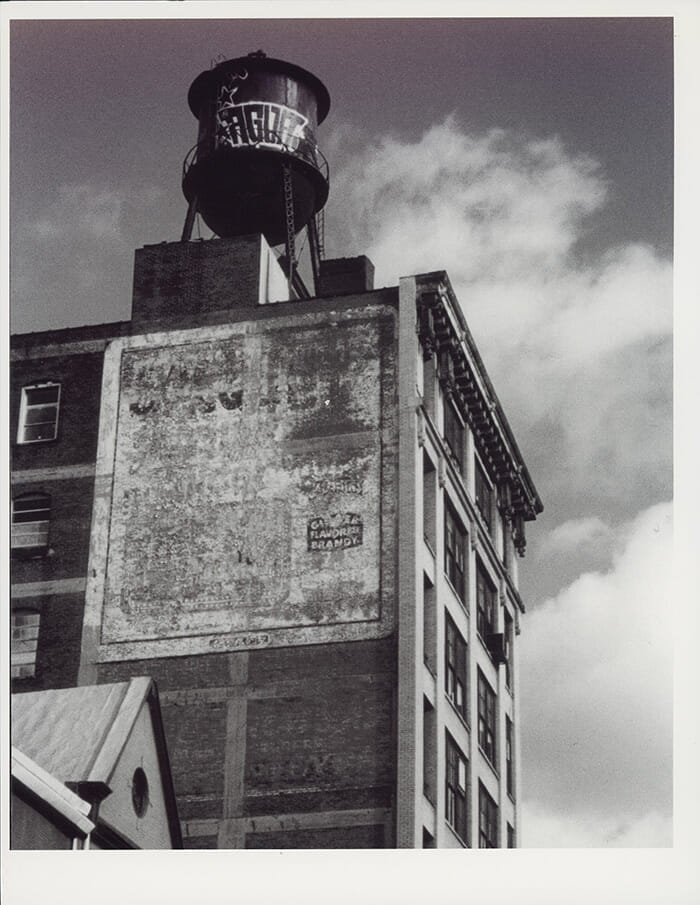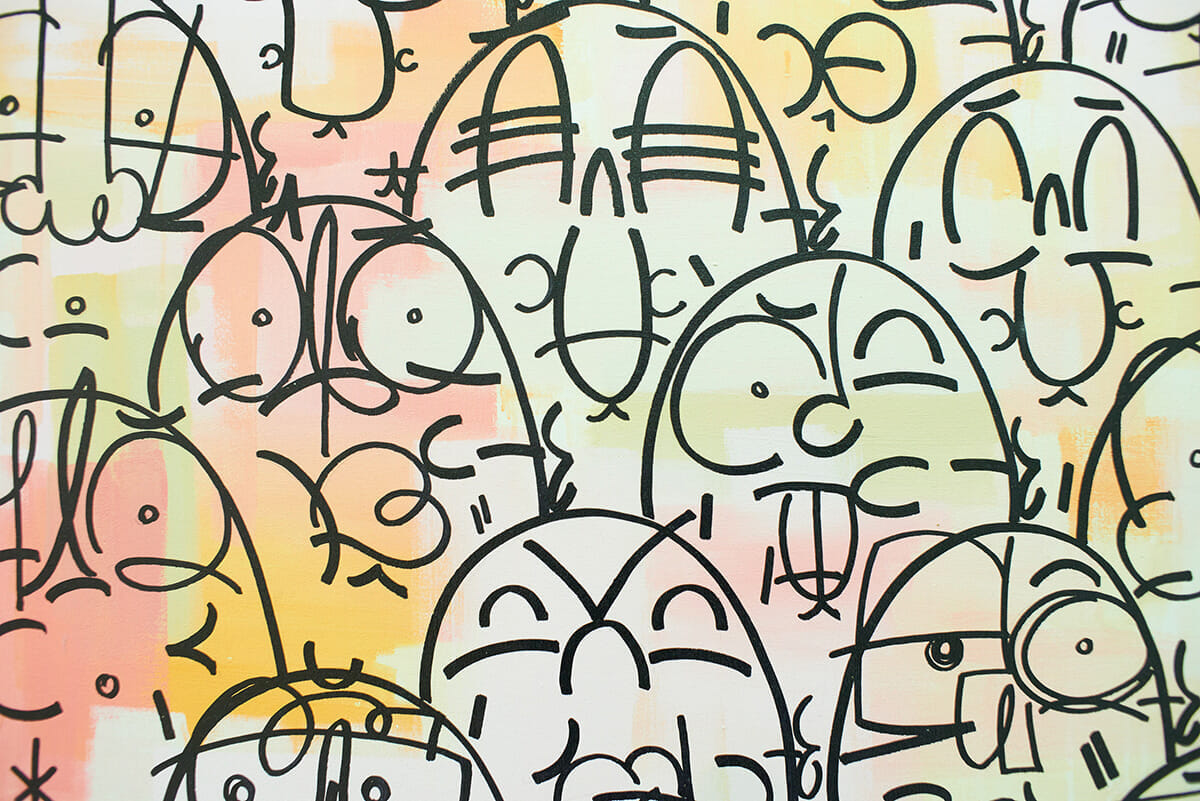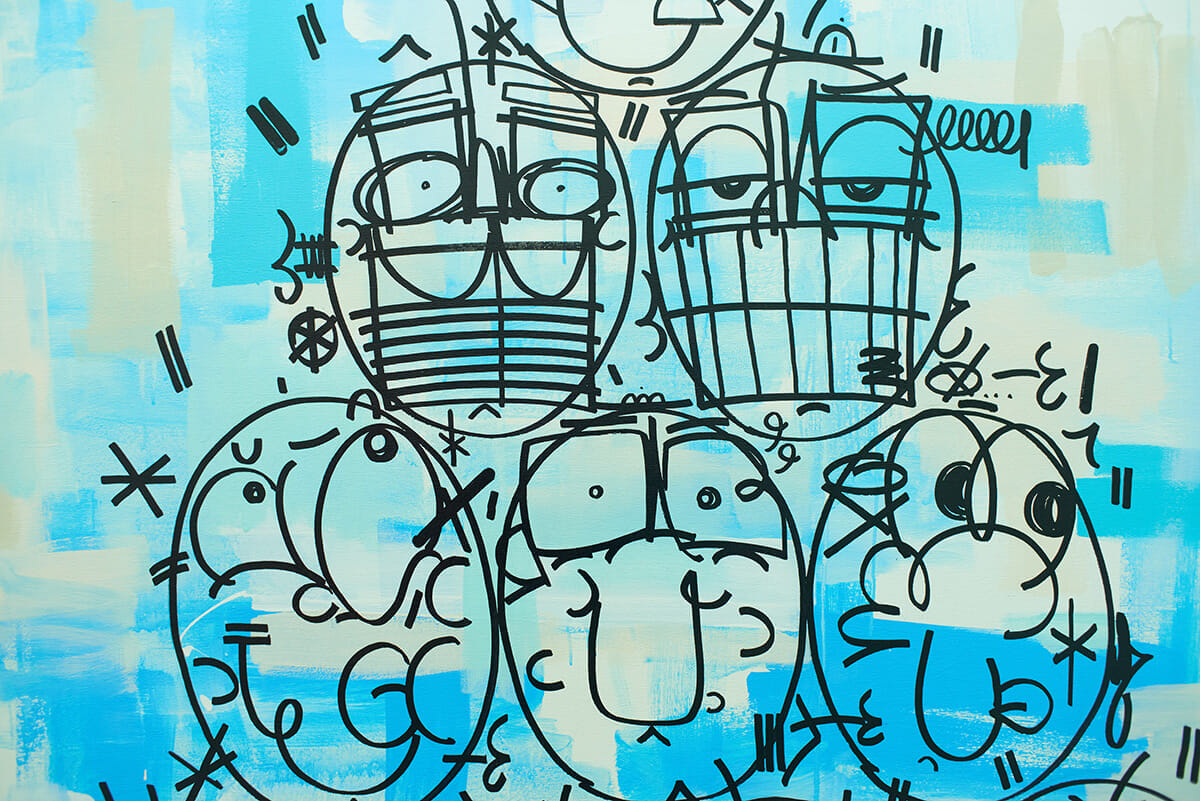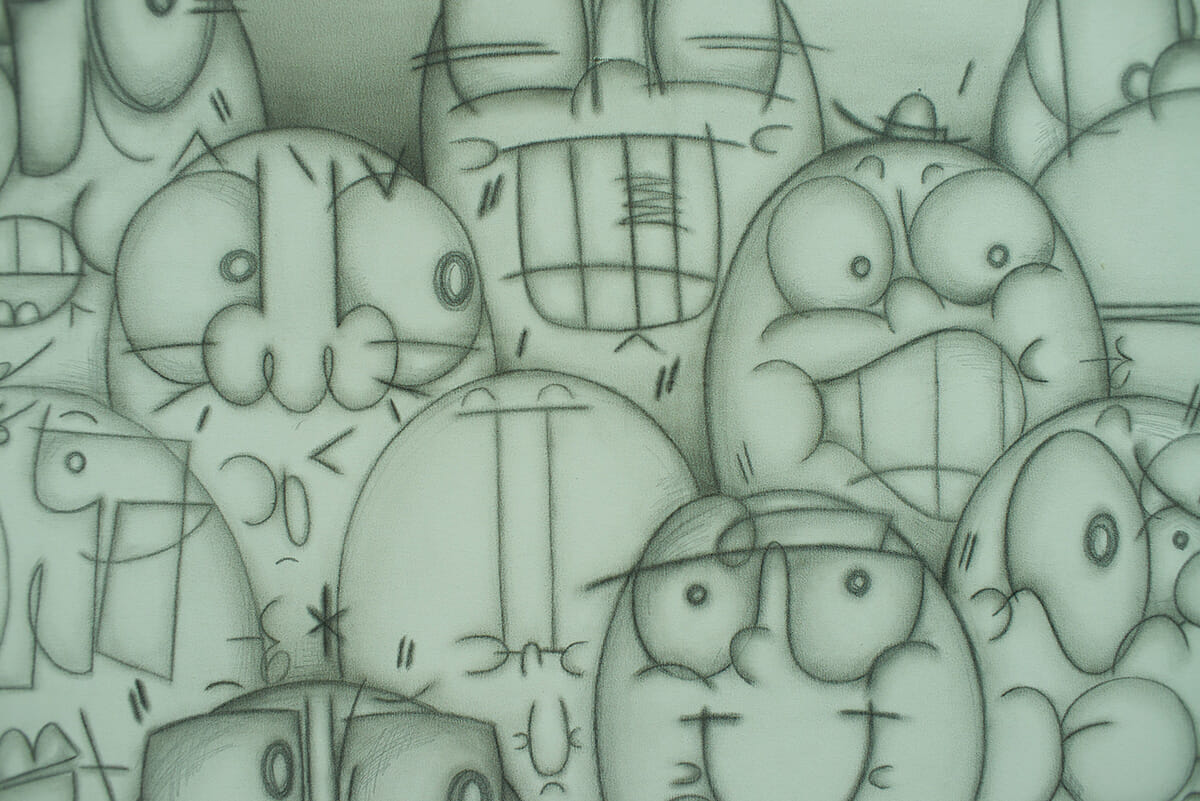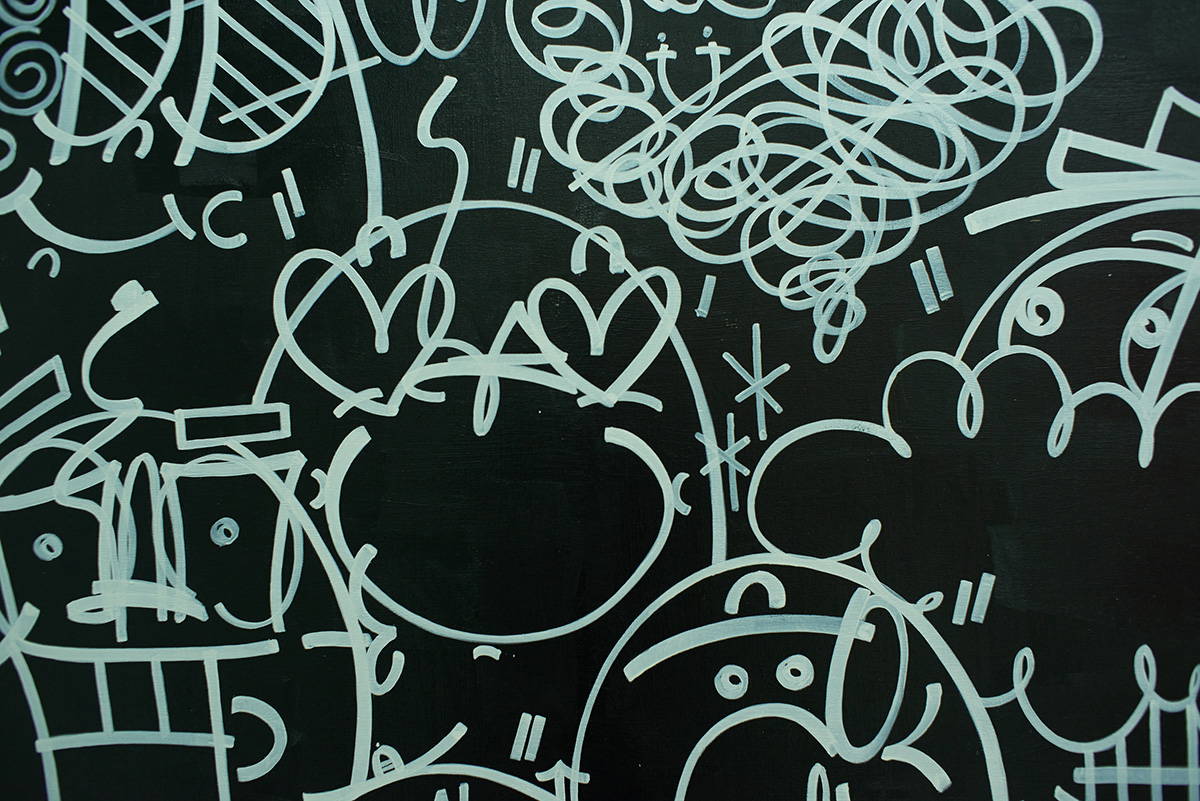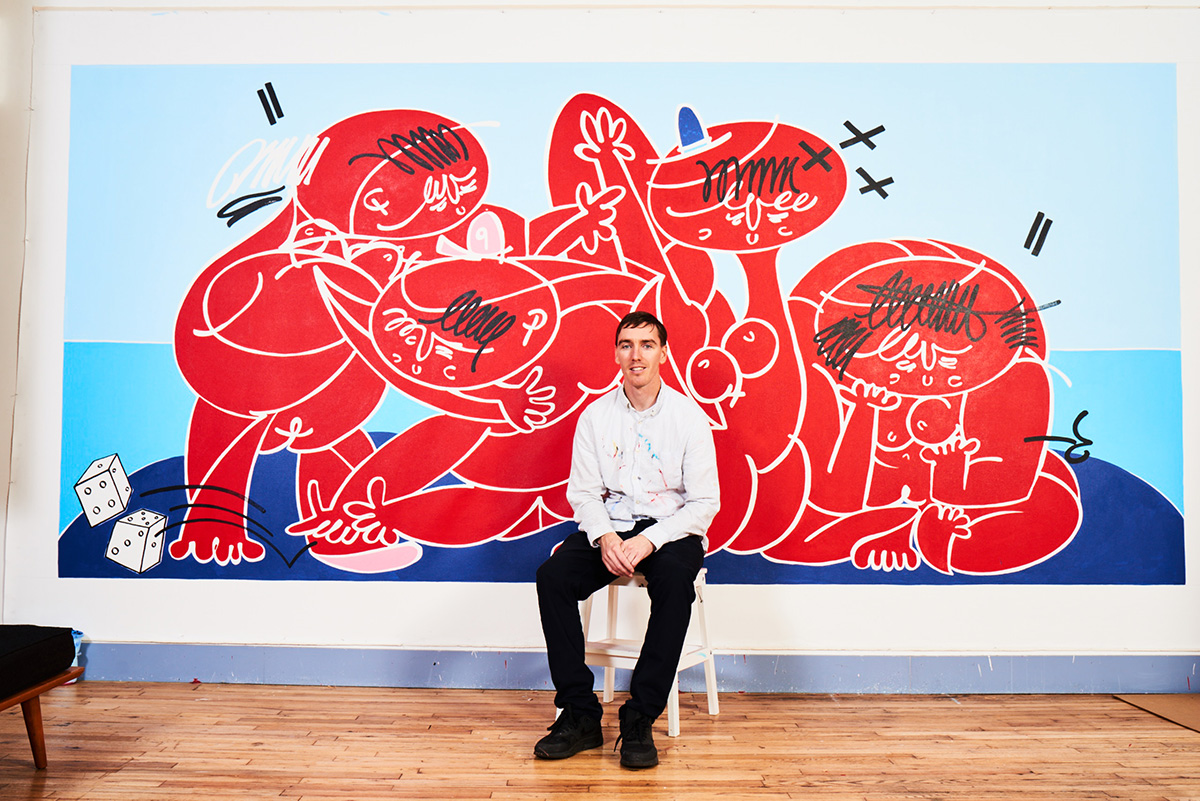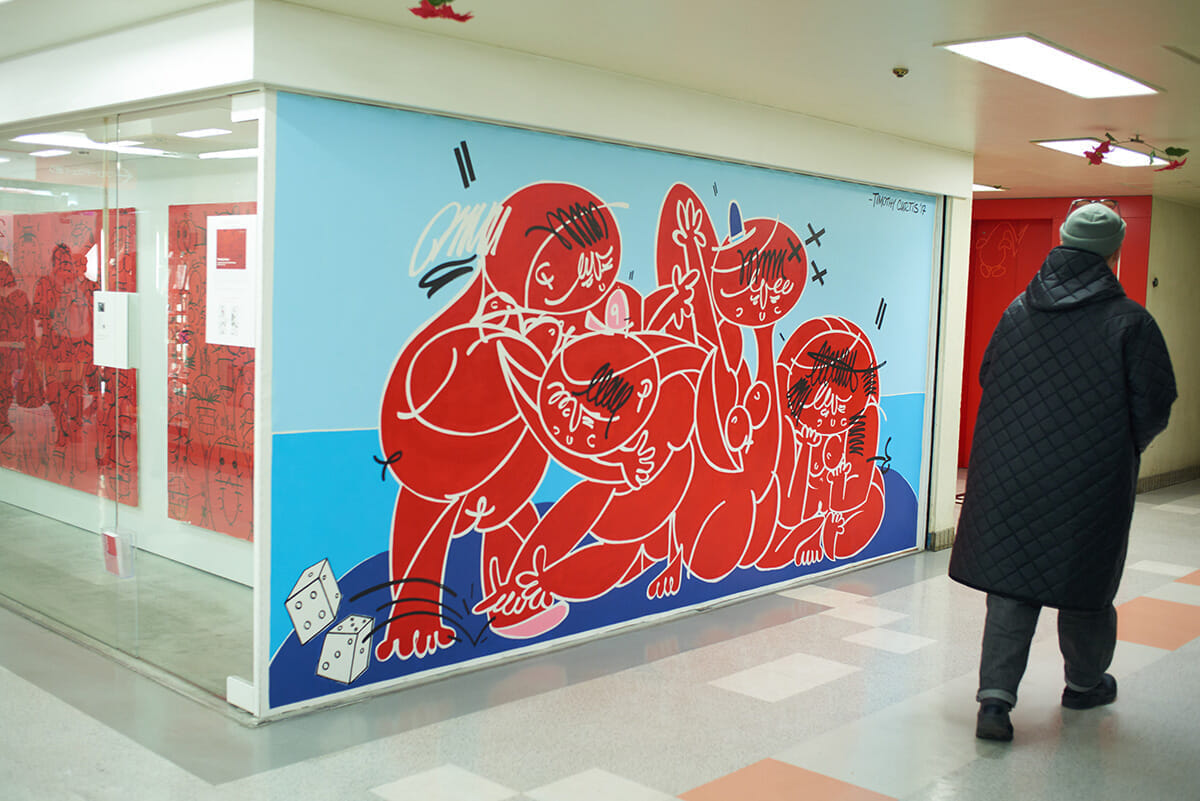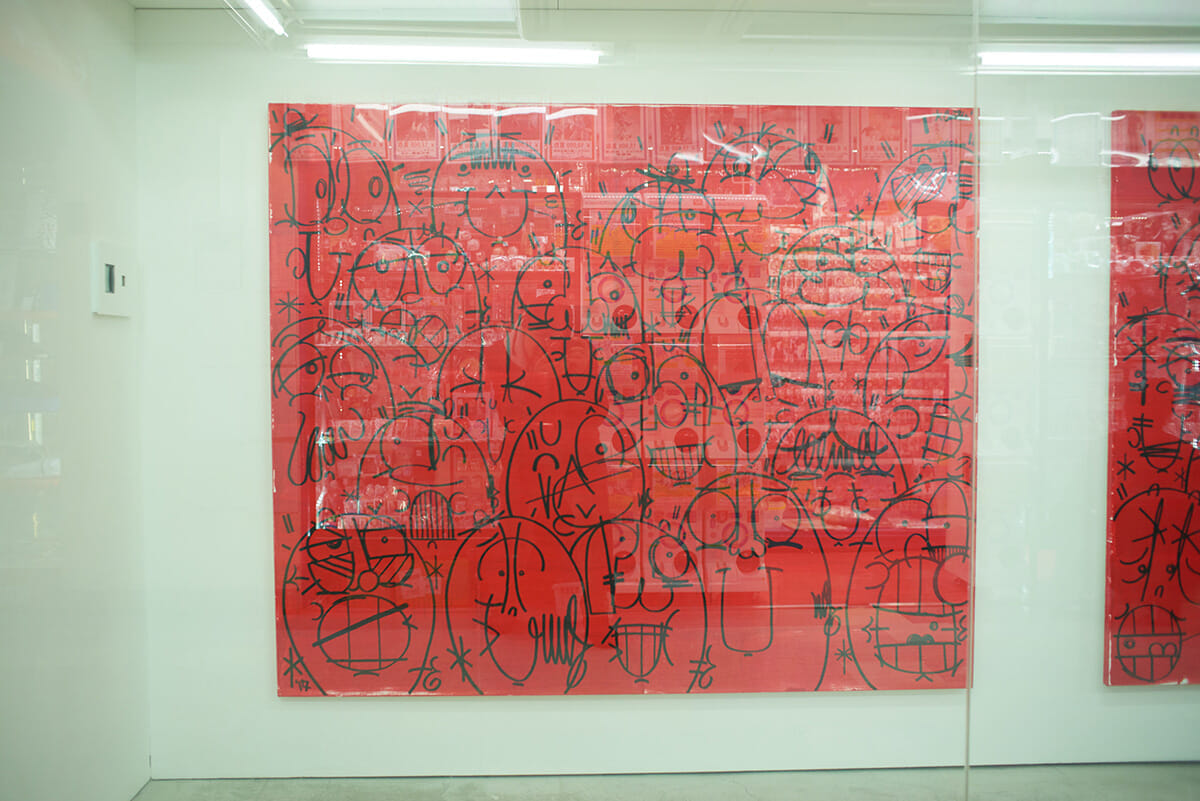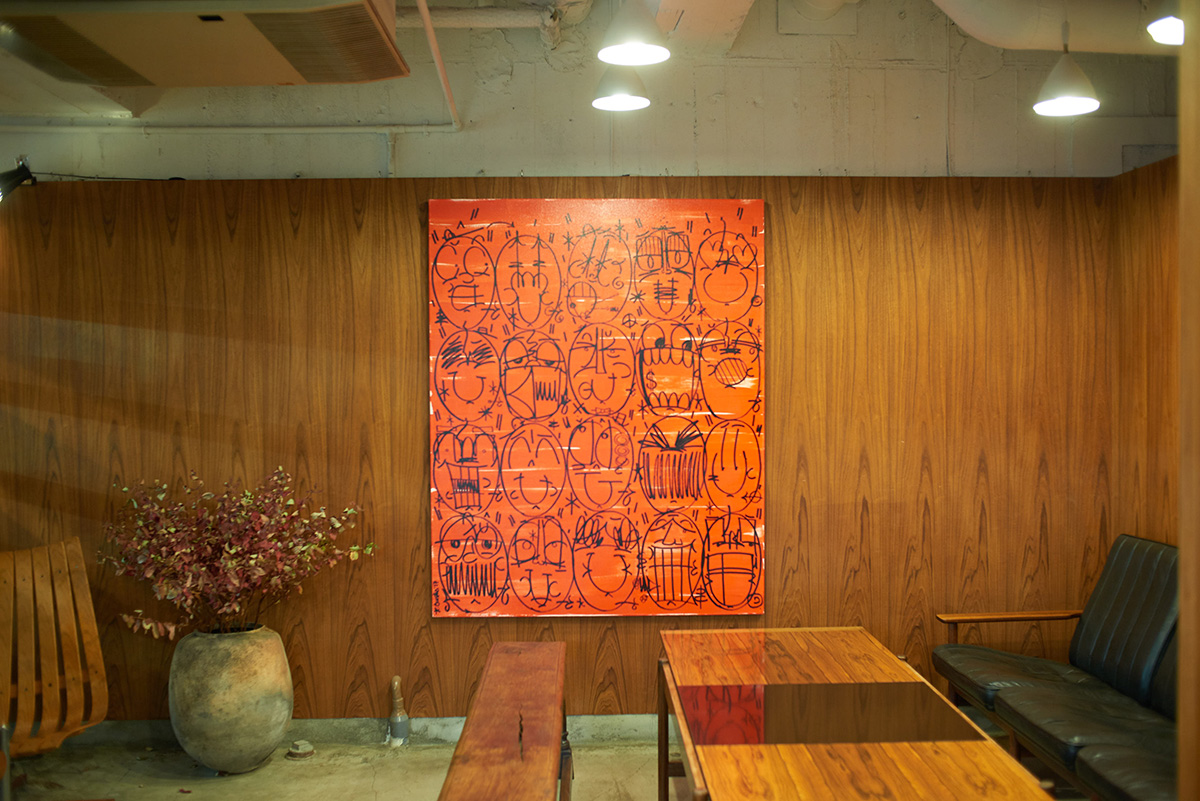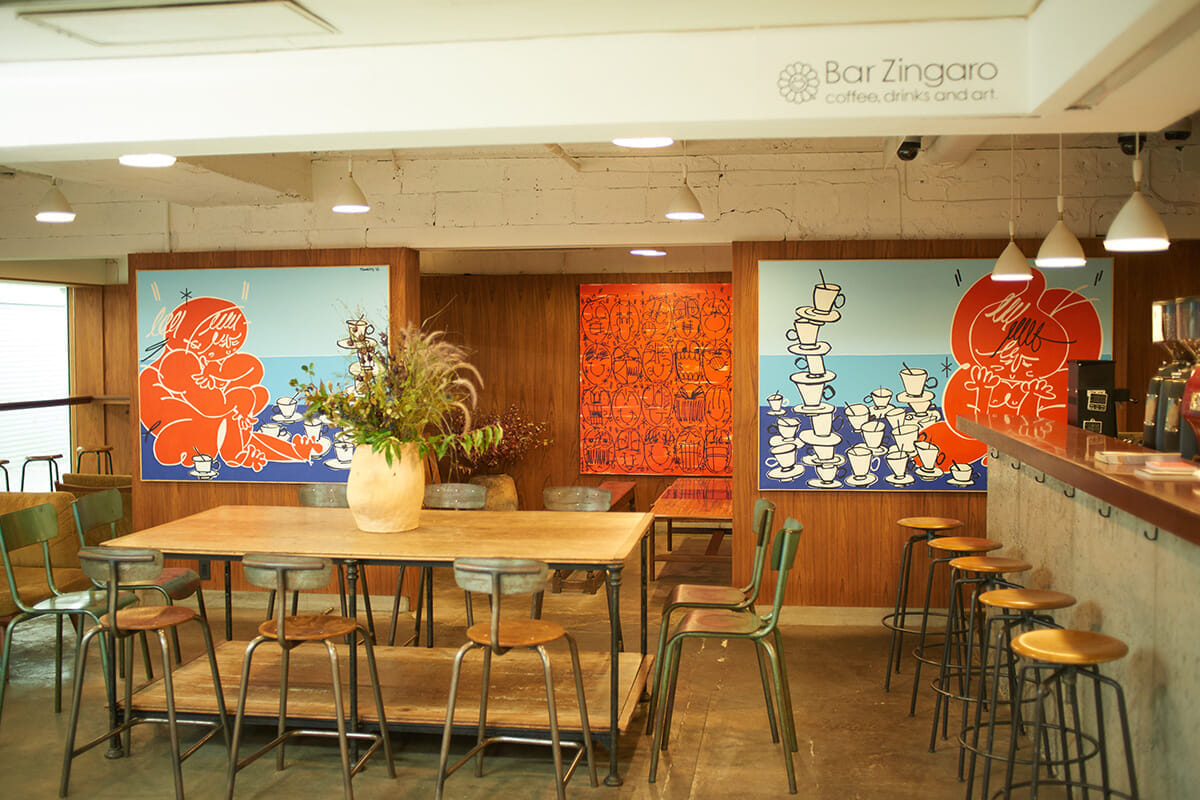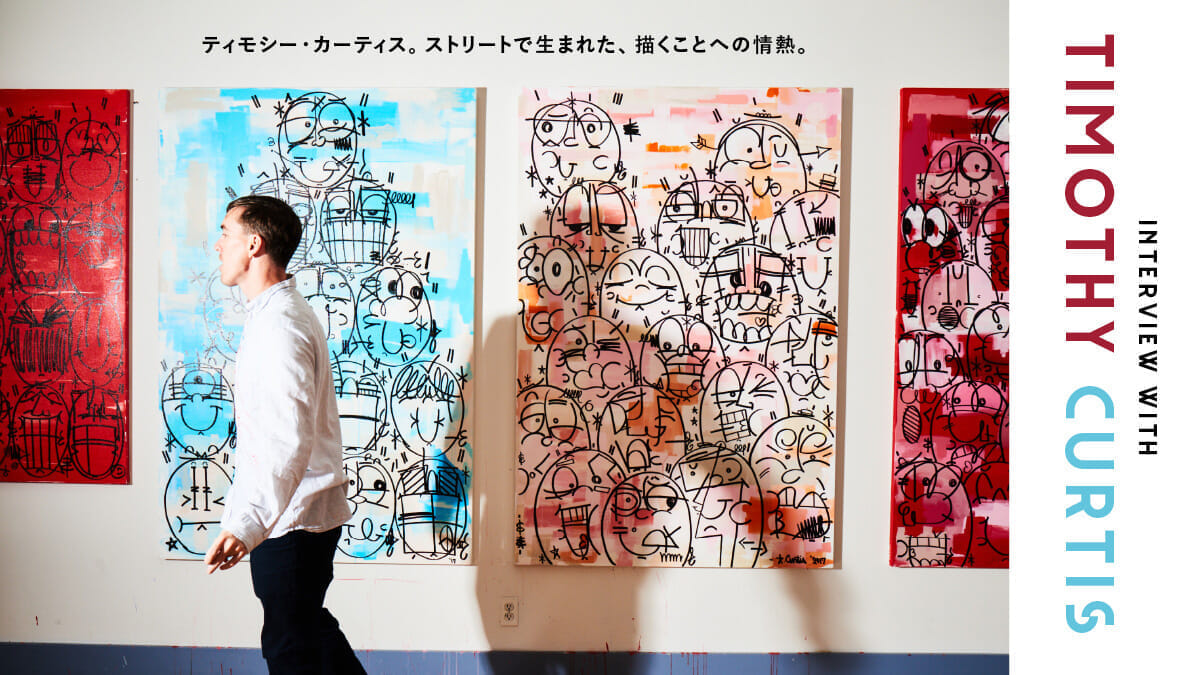
Interview with Timothy Curtis
Timothy Curtis. Born on the streets , a passion for drawing.
Timothy Curtis, who began his career as an artist at Graffiti Culture in Philadelphia, is now based in Brooklyn, NY. His first solo exhibition, "Laugh Now, Laugh Later: Painted Drawings," was held at Hidari Zingaro, a gallery on Nakano Broadway run by Takashi Murakami's Kaikai Kiki. Although his current style is pop, the lines he draws have a unique strength that is different from that of studio artists. We asked Timothy about the relationship between art and graffiti, which he says he taught himself through street art.
- Photo_ Kyle Dorosz (TOP), Haruki Matsui (in Japan)
- Text_Maruro Yamashita
- Edit_Jun Nakada


